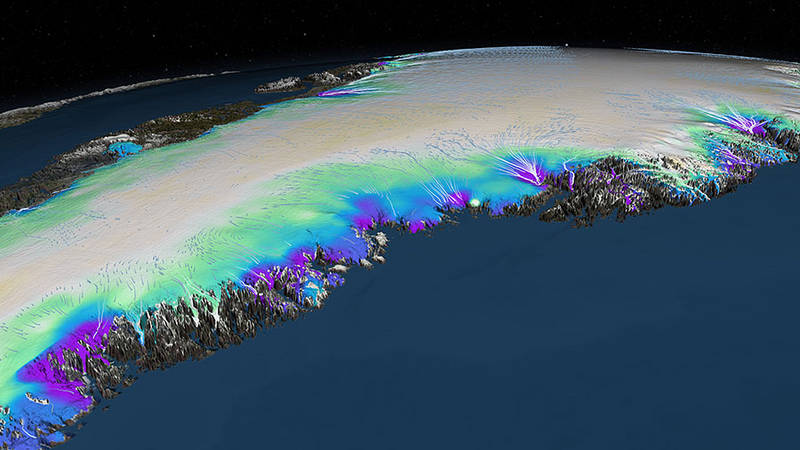If global warming is not a concern for many yet, the fast pace at which the icy landmass of Greenland is melting should be something to think about. New research has suggested that Greenland is melting at a pace quicker than the one earlier models predicted.
According to new research by the National Snow and Ice Data Center, it is estimated that if Greenland’s ice sheet melted, sea level would rise six meters (or 20 feet), causing grave threats such as floods and storms, and displace millions as it happened.
In the 20th century alone, the sea level rose by 6.7 inches and it is estimated that this number will only increase, roughly by two to five times–an alarming 11 to 37 inches–by the turn of the 22nd century, according to the latest report by Intergovernmental Panel on Climate Change (IPCC).
To prove their point, scientists have collected data from NASA’s ICESat spacecraft and Operation IceBridge, plotting the elevation of 100,000 sites on Greenland from 1993 to 2012. According to the research, Greenland has already lost an average of 243 gigatons of ice during the period between 2003 and 2009, adding 0.027 inches to the sea level per year.
Post-analysis, researchers were able to make estimations on the amount of ice that has melted over the years. A quite intricate melting pattern in itself, scientists believe that although they cannot conclusively predict the amount of ice that will melt in Greenland in the future, the data does underline the degree of dilemma we face with regards to glacial melting now.
Beata Csatho, a study author and professor of Geology at the University at Buffalo said of past findings, “My personal opinion is that most of the predictions of this as far as Greenland is concerned are too low.”
Csatho and her colleagues found the complex pattern hard to decipher and interpret in layman’s terms because a drop in the temperature thickens the ice, instead of melting it.
To understand the research better, scientists divided Greenland’s glaciers into seven groups based on characteristics of their melting pattern from 2003 to 2009. “Understanding the groupings will help us pick out examples of glaciers that are representative of the whole. We can then use data from these representative glaciers in models to provide a more complete picture of what is happening.” Csatho concluded.
The researcher pointed out that the currently-used model ignores the extensive ice loss in southeastern Greenland, which, after all, contributes to more than half of the ice loss in Greenland. Another issue the research noted was that current predictions are based on data is being from Kangerlussuaq, Petermann, Helheim, and Jakobshavn, a team that measured only four of Greenland’s 242 glaciers. The other 238 glaciers exhibit different behaviours throughout the year, according to the researchers–a fact that has been ignored and probably contributed to the recently discovery of a rate of melting that is quite different from what was thought before.
Analysis by Rathan Paul Harshavardan
Image: NASA
